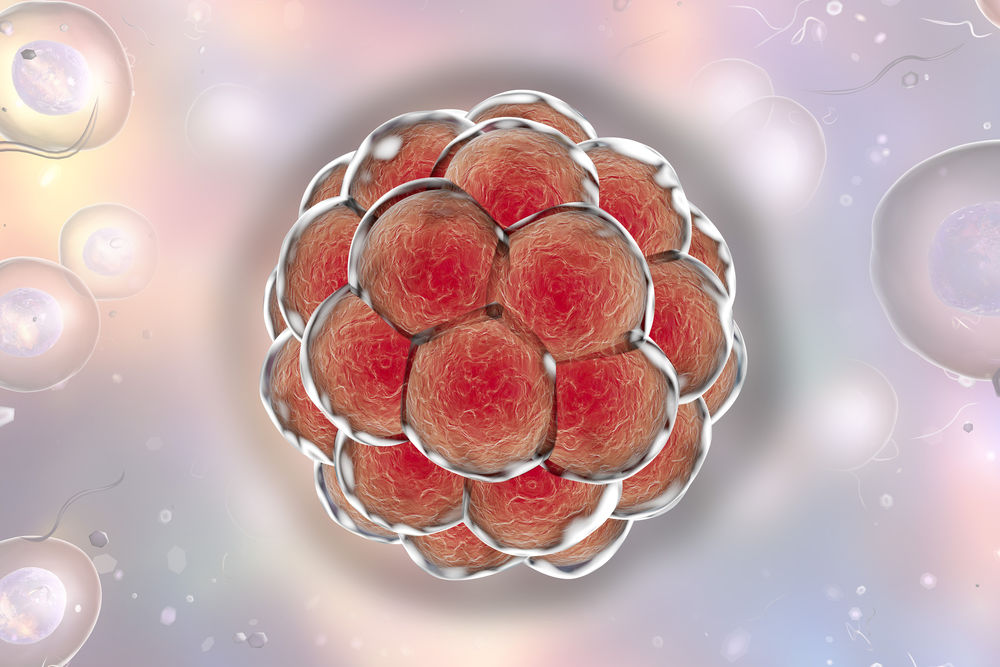Recent medical developments, gene splicingrnand treating paralysis by meansrnof embryonic stems cells, have been heralded by anrnuncritical public as great advances in reducing human suffering. In both cases,rnwe have forgotten something important: an embryonic person has been sacrificedrnin the process. Fr. Tad Pacholcyzk, bioethicist from the National CatholicrnBioethics Center, recently wrote an eloquent article about these expendable children. Perhapsrnthe problem is not just that they are expendable, but invisible.
Even when presented with the information that treatment requiresrnembryonic stem cells, far too many people fail to make the connection betweenrnthat term and the reality of a person. The embryo is not merely expendable: hernis not even recognized as present. The great wonder of medical advancementrnblinds us of the reality of the tiny person being sacrificed to make itrnpossible.
In an Internet discussion, I remarked that, in the case ofrnembryonic stem cell research, a human person had to die in the process. Even inrnthat thread, populated largely by Christians, many of whom are Catholic, thernresponse was swift and strong in defense of new advancements and in derision ofrnmy comment. It came down to this:
This isrnnot a human person being killed. Doctors put an egg and a sperm in a petri dishrnand let them multiply for a few days. The woman who gives the egg and the manrnwho gives the sperm have willingly donated them so there is no problem withrnconsent. Women have more eggs, and men produce more sperm, than ever becomernchildren and even fertilized eggs often do not survive to birth. Yes, thosernsperm and eggs have the potential to become humans; but overwhelmingly, thernvast majority don't. You're telling me that a clump of cells—donated by willingrnparticipants—is more important than a young man whose life has been improvedrnbecause he is no longer paralyzed? I don’t believe so.
It isrnimportant to recognize and speak out against these errors now, at the beginning of the research process. If werndo not, we risk being in a situation similar to that of the MMR vaccine: havingrnavailable, effective and accepted treatment that is morally objectionable butrnwhich will not be replaced with something more acceptable because the outcry isrnnot sufficient to require investment of time and money to develop anrnalternative for what is seen as a relative minority of the public.
Could yournargue effectively against this kind of admittedly emotional appeal? Could yourrnchildren? How many of us, should therntime come when such a treatment is easy and effective, would be able to refusernit for ourselves or a loved one and say, “We followrnJesus. We cannot do this.”
There arernfive key points to keep in mind when looking at and discussing the issue ofrnstem cell research:
Notrnall stem cell research is the same. Stem cells derived fromrnpersons who can consent and are not harmed by the process (adult stem cells)rnand stem cells from umbilical cord blood present no moral problems. Much of thernsuccessful research involving stem cells has been done using cells from thesernacceptable sources. That makes it practical and sensible to pursue researchrnusing these, rather than embryonic stem cells derived from a human embryo, whichrnis destroyed in the process.
Itrnis essential not to confuse eggs and sperm—which are not persons—with arnfertilized egg and embryo, which the Church teaches must be treated as a person.rnFertilized eggs and embryos constitute a new life, genetically distinct fromrneither parent. That life is real, unique, precious and unrepeatable. Thatrnperson, even when only a single cell, has inherent dignity, is worthy ofrnprotection, and is not just potential. He or she is present in the world andrnlooks just as expected at that point in development.
Thernnumber of eggs and sperm we produce is irrelevant, as is the fact that somernfertilized eggs and embryos do not go on to full development. Eggsrnand sperm have a particular purpose: reproduction. The natural failure of a fertilizedrnegg to fully develop to the point of live birth is as different from purposefulrndestruction of embryos as natural death is from murder.
Therernare three people, not two, who must consent to the process of procuringrnembryonic stem cells: the egg donor, the sperm donor andrnthe person created from the union of the egg and sperm. The person who is the embryo did not (andrncould not) consent to this procedure. Moreover, it is not possible for thernparents to consent in this matter for him given that it ends in his destructionrnand provides him no benefit. It is crystal clear to medical researchers thatrnpersons must give consent to experiments performed upon them. Refusing tornrecognize the person who the embryo is permits research that would otherwise bernimpossible, and Ù— so the argument goes — there is so much good that can comernif the research is fruitful.
This brings up the final point:
Therngood to be done by embryonic stem cell research is irrelevant even ifrnemotionally compelling because those cells result from an act that can never berncondoned: intentional destruction of a vulnerable and innocent person.rnThe initial act is gravely immoral — a sin. Any medical treatment that requiresrnthe intentional destruction of one person in order to cure another is quiternsimply wrong. The ends do not justify the means, especially when the means isrnthe destruction of one life in favor of another.
The time to educate ourselves and to speak out to educate others aboutrnstem cell research is now. It is not just a topic to be left to the so-calledrnexperts in the field who do not see the moral issues involved. If publicrnoutrage is sufficient to force removal of monuments and statues, surely it canrnbe sufficient to protect the most vulnerable among us from this kind ofrnexploitation: the human person in the form of an embryo.
Barbara Golder had a 40-year career in medicine and law, including health care ethics. She is now the award-winning author of the ‘Lady Doc’ mystery series and serves as Director of Adult Faith Formation and Evangelization at the Basilica of Sts. Peter and Paul in Chattanooga, Tennessee. She blogs at ladydoclawyer.com.
Interested in more? Subscribe to Angelus News to get daily articles sent to your inbox.

